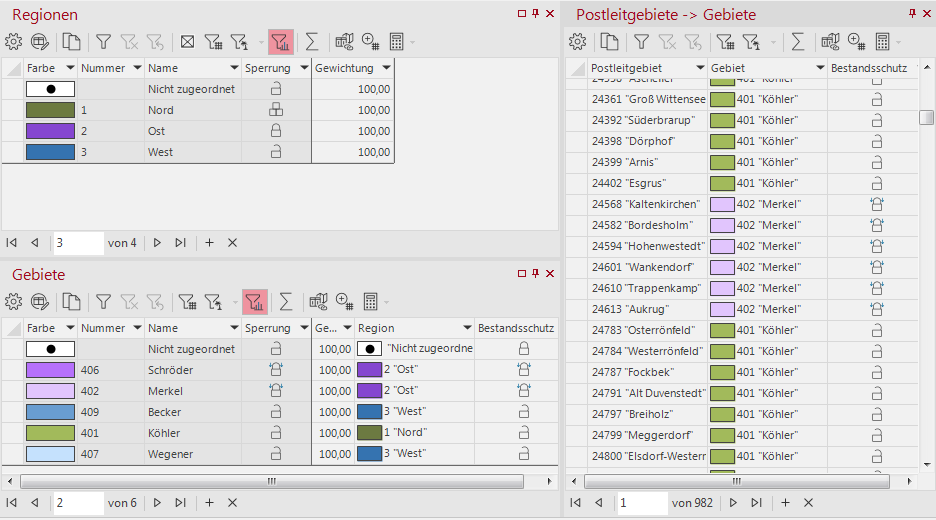Explicit and implicit blocking
Display of locks in the table
In the tables and the organizational chart view, the individual locks are identified by symbols.

|
An open lock means that there is no blocking. |

|
A closed lock indicates that the area in question is either protected or completely closed. |

|
A closed lock with blue arrows indicates an assignment that is only locked against changes due to a complete locking of a higher-level area. |

|
A wall means that the area is protected. |

|
A wall with blue arrows appears when the area protection of the area is activated and a higher level is closed at the same time. |
Passing on the locks in the tables
Each lock set manually by the user is called explicit lock and is indicated in the table by a closed lock. A full closure of a higher-level area is equivalent to a full closure of all areas that are subordinate to the fully closed area. In addition, a full lock also means grandfathering for all assignments at all levels below the fully locked area. EasyMap automatically sets such indirect locks that result from a full lock. Such implicit locks are indicated by blue arrows on the respective lock symbol in the table. If the full block of the higher-level area is lifted again, all implicit blockages caused by the full block are automatically lifted again.

The illustration above shows the different types of locks:
- Region East has been explicitly fully locked (closed lock); therefore EasyMap has automatically locked all territories in Region East (implicit lock, closed lock with blue arrows); EasyMap has also automatically placed the assignments of this territory to Region East under grandfathering (implicit lock, closed lock with blue arrows);
- EasyMap has also automatically placed the assignments of all postal codes in Region East under the protection of stock (implicit blocking, closed lock with blue arrows).

